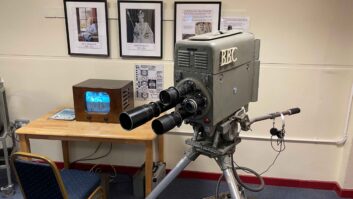In recent years, the landscape of broadcast and media has transformed at an unprecedented pace. For the past three decades, technological advancements have gradually enhanced user experience and streamlined operations, but these changes now seem sluggish in comparison to the rapid evolution sparked by the streaming boom. The pace of change in broadcast and media content today is significantly accelerated, driven by the surge in streaming services. MPEG-2 is a fantastic example of this lasting resurgence; despite being 30 years old, MPEG-2 remains robust and reliable, proving its strength in the ever-evolving tech landscape. As for HD, its transition saw the adoption of AVC standards, but from firsthand experience, HD was slow to become the dominant format it is today. Netflix is another good example; they show us that contrary to what some might think, it is HD, not UHD, that holds dominance.
The HD Era
Around 2003-2006, most people will likely remember TVs for sale labelled as “HD Ready” and “Full HD,” which, in hindsight, clearly reflected an industry still unsure of its own identity. There was significant confusion between 720 and 1080 resolutions, and a format war broke out between Blu-ray and HD-DVD. Consumers were hesitant to adopt the new technology, often making comments like, “there’s nothing to watch in HD yet.” What’s more, broadcasters were slow to adopt HD due to several challenges. File sizes increased significantly, necessitating more storage both digitally, with solutions like Diva Archives, and physically, with tape storage services having to cope with the demands of more tapes being stored in SD and HD formats. This challenge contributed to the gradual transition of HD broadcasting.

Eventually, internal and external bandwidth frequently became bottlenecked when transferring files between servers or to transcoders. Long bouts of distributed content were often too large for tape or FTP transfers, necessitating delivery via a dedicated lines record that was at the mercy of weather conditions. Content came in US cadence, and this brought conversion artefacts that HD content made a lot more noticeable. Examples of this include cadence changes caused in 3:2 pull down, creating a juddering effect. HD took about 15 years to gain traction, as it had to integrate into an infrastructure initially designed for SD content. Despite the challenges, a few small adjustments to these systems enabled HD to work effectively. Throughout this period, the format of TV distribution remained largely unchanged, but this was only the beginning.
UHD, AVC and the rise of streaming
With UHD, broadcasters anticipated its arrival and began preparing earlier. Slowly, the industry moved to be UHD ready, and then something amazing happened, the internet got fast, broadband moved past ISDN and T1 and mobile phone networks evolved from 3G to 5G, the data race was officially on.
AVC rose to become the behemoth it is today, and SD had a new value, 720p. New codecs emerged to handle UHD files over limited bandwidths. The growth in streaming that saw the Netflix story unfold and the emergence of BBC iPlayer, Amazon Prime Video and so on drove the need for improved codec efficiency, leading to the development of HEVC. Now, VVC is already knocking at our doors, promising even greater advancements in video compression. Streaming services have recently seen exponential growth, with studios launching their own platforms to bypass aggregators.
Going forward, it will be interesting to see the evolution of costs and content demands. Initially, these services launched ad-free, giving users complete control over what to watch and when (or to scroll endlessly without watching). However, streaming platforms have introduced ad-based offerings, reintroducing linear-style ad breaks alongside increasing prices to cover production and broadcasting infrastructure costs. This shift has led to a surge in piracy and the rise of new solutions to get around DRM and watermarking.

Recently, FAST (Free Ad-Supported Streaming TV) services have emerged, intensifying the shift back to commercial viewing while providing an alternative to the rising costs of subscriptions. After cord-cutting led viewers to sign up for multiple streaming services to keep up with new shows, monthly bills skyrocketed. FAST services offered a welcome alternative to subscription fees and introduced targeted ad revenue in place of lost subscription fees. This shift also raises an intriguing question: is it time to move beyond traditional ad breaks in favour of more immersive advertising experiences?
In the last 5-10 years, the industry has advanced at an unprecedented pace, contrasting sharply with the previous slow and steady evolution. Consequently, older technologies embedded in our systems are becoming obsolete more rapidly, even though they often remain crucial for broadcasting and revenue generation. This rapid pace of change is contributing to a confusing classification of broadcasting. Take FAST channels for example, these can be VoD as well as linear.
Conclusion
Reflecting on the past three decades, it is clear that the industry has seen a great deal of change. The question remains, do we need a new classification, or can we adapt existing frameworks to accommodate these evolving formats?
As consumer demand continues to increase, it is important that industry professionals begin to consider the effect of the streaming revolution. Understanding the difference between a FAST channel and a linear, pre-defined broadcast with non-targeted ads is key. What does ‘Paid TV’ mean now in the world of SVoD? A re-identifying mechanism needs to be introduced for this to take place or we risk carrying decades-old biases into the new world.







